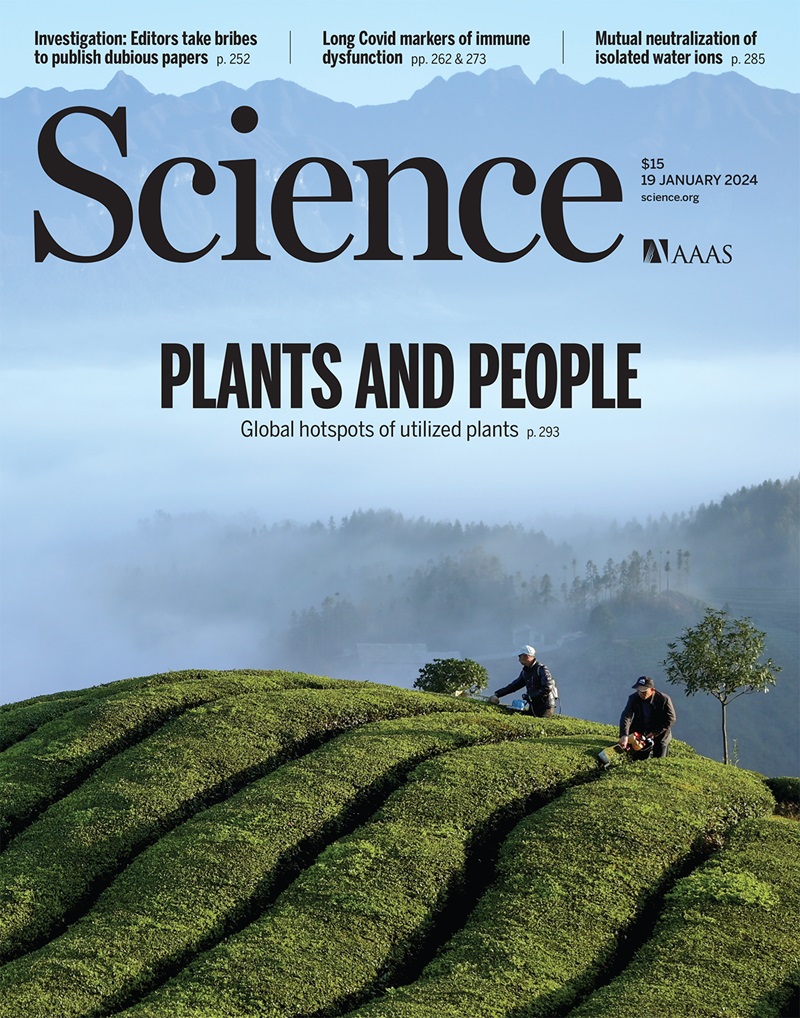衰老大脑中的翻译交通堵塞
IF 45.8
1区 综合性期刊
Q1 MULTIDISCIPLINARY SCIENCES
引用次数: 0
摘要
衰老是由几个并发的生物过程驱动的,这些过程可以总结为衰老标志的核心变化子集(1)。这些特征几乎涵盖了细胞生理学的所有方面,并且已知在进化上是保守的。蛋白质稳态(proteostasis)确保蛋白质在不再需要时被正确地合成、折叠和降解。蛋白质平衡的破坏是正常衰老的一个关键特征,通常与衰老的其他特征一起发生,包括基因组不稳定、线粒体功能障碍和表观遗传改变(2)。尽管如此,蛋白质平衡受损和其他衰老特征之间的明确分子联系尚未建立。在本期的第478页,Di Fraia等人(3)报道了一项对鳉鱼(Nothobranchius furzeri)大脑衰老的全面生化调查,发现一组必需蛋白质的产生被破坏是蛋白质平衡受损与其他衰老标志之间的联系。本文章由计算机程序翻译,如有差异,请以英文原文为准。
Translational traffic jam in aging brains
Aging is driven by several concurrent biological processes, which can be summarized in a subset of core alterations referred to as the hallmarks of aging (1). These hallmarks encompass almost all aspects of cellular physiology and are known to be evolutionarily well conserved. Protein homeostasis (proteostasis) ensures that proteins are correctly made, folded, and degraded when no longer needed. Disruption in proteostasis is a key feature of normal aging and often occurs alongside other hallmarks of aging, including genome instability, mitochondrial dysfunctions, and epigenetic alterations (2). Nonetheless, a definitive molecular link between impaired proteostasis and other aging hallmarks has yet to be established. On page 478 of this issue, Di Fraia et al. (3) report a comprehensive biochemical investigation of brain aging in the killifish (Nothobranchius furzeri) that identifies disrupted production of a group of essential proteins as a link between impaired proteostasis and other hallmarks of aging.
求助全文
通过发布文献求助,成功后即可免费获取论文全文。
去求助
来源期刊

Science
综合性期刊-综合性期刊
CiteScore
61.10
自引率
0.90%
发文量
0
审稿时长
2.1 months
期刊介绍:
Science is a leading outlet for scientific news, commentary, and cutting-edge research. Through its print and online incarnations, Science reaches an estimated worldwide readership of more than one million. Science’s authorship is global too, and its articles consistently rank among the world's most cited research.
Science serves as a forum for discussion of important issues related to the advancement of science by publishing material on which a consensus has been reached as well as including the presentation of minority or conflicting points of view. Accordingly, all articles published in Science—including editorials, news and comment, and book reviews—are signed and reflect the individual views of the authors and not official points of view adopted by AAAS or the institutions with which the authors are affiliated.
Science seeks to publish those papers that are most influential in their fields or across fields and that will significantly advance scientific understanding. Selected papers should present novel and broadly important data, syntheses, or concepts. They should merit recognition by the wider scientific community and general public provided by publication in Science, beyond that provided by specialty journals. Science welcomes submissions from all fields of science and from any source. The editors are committed to the prompt evaluation and publication of submitted papers while upholding high standards that support reproducibility of published research. Science is published weekly; selected papers are published online ahead of print.
 求助内容:
求助内容: 应助结果提醒方式:
应助结果提醒方式:


